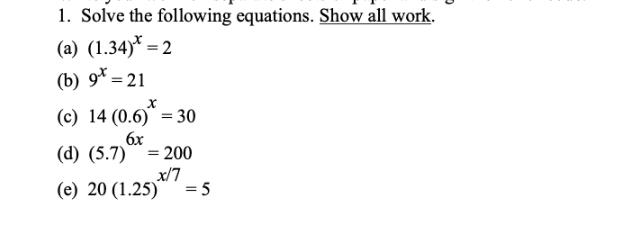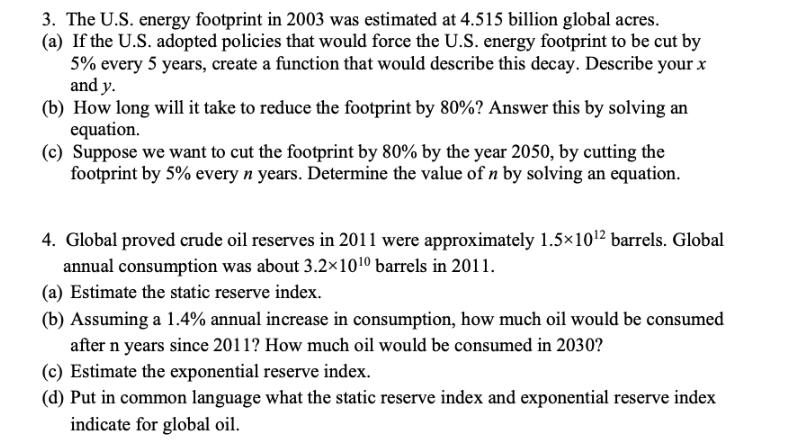Answered step by step
Verified Expert Solution
Question
1 Approved Answer
1. Solve the following equations. Show all work. (a) (1.34)=2 (b) 9x=21 x (c) 14 (0.6) 30 6x (d) (5.7) = 200 x/7 (e)



1. Solve the following equations. Show all work. (a) (1.34)=2 (b) 9x=21 x (c) 14 (0.6) 30 6x (d) (5.7) = 200 x/7 (e) 20 (1.25)=5 2. Assume that the population is currently at 23,000 and that it is growing by 2.1% every 10 years. (a) Determine an equation for the function that describes this growth over time. Describe your x and y. (b) Determine the size of the population after 35 years. (c) How long will it take for the population to triple? Answer this by solving an equation. 3. The U.S. energy footprint in 2003 was estimated at 4.515 billion global acres. (a) If the U.S. adopted policies that would force the U.S. energy footprint to be cut by 5% every 5 years, create a function that would describe this decay. Describe your x and y. (b) How long will it take to reduce the footprint by 80%? Answer this by solving an equation. (c) Suppose we want to cut the footprint by 80% by the year 2050, by cutting the footprint by 5% every n years. Determine the value of n by solving an equation. 4. Global proved crude oil reserves in 2011 were approximately 1.51012 barrels. Global annual consumption was about 3.21010 barrels in 2011. (a) Estimate the static reserve index. (b) Assuming a 1.4% annual increase in consumption, how much oil would be consumed after n years since 2011? How much oil would be consumed in 2030? (c) Estimate the exponential reserve index. (d) Put in common language what the static reserve index and exponential reserve index indicate for global oil.
Step by Step Solution
There are 3 Steps involved in it
Step: 1

Get Instant Access to Expert-Tailored Solutions
See step-by-step solutions with expert insights and AI powered tools for academic success
Step: 2

Step: 3

Ace Your Homework with AI
Get the answers you need in no time with our AI-driven, step-by-step assistance
Get Started


